Author Archive
New Poll Finds Americans Want Modernized Water Infrastructure
February 25th, 2016 | By: Becky Moylan
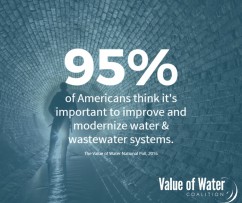 On Wednesday, the Value of Water released the results of a new poll that finds 95% of Americans believe it is important to improve and modernize our water systems. At a time when a water main breaks every two minutes in the U.S., 60% of respondents said they are willing to pay more for secure water service upon hearing the facts of the state of our nation’s water infrastructure.
The new data shows that we must seize this watershed moment (pun intended) to educate people about the true value of water. Our water infrastructure is at a critical juncture, as much of it is past its useful design life. Both drinking water and wastewater received “D” grades in the 2013 Report Card for America’s Infrastructure. Americans top concerns around water include being able to drink straight from the tap and treating wastewater in a safe and environmentally responsible way, according to the survey results.
Our lives and the economy depend on strong and reliable water infrastructure. This latest national survey demonstrates Americans’ understand the significance of our water infrastructure, and the majority believe we should invest in it.
On Wednesday, the Value of Water released the results of a new poll that finds 95% of Americans believe it is important to improve and modernize our water systems. At a time when a water main breaks every two minutes in the U.S., 60% of respondents said they are willing to pay more for secure water service upon hearing the facts of the state of our nation’s water infrastructure.
The new data shows that we must seize this watershed moment (pun intended) to educate people about the true value of water. Our water infrastructure is at a critical juncture, as much of it is past its useful design life. Both drinking water and wastewater received “D” grades in the 2013 Report Card for America’s Infrastructure. Americans top concerns around water include being able to drink straight from the tap and treating wastewater in a safe and environmentally responsible way, according to the survey results.
Our lives and the economy depend on strong and reliable water infrastructure. This latest national survey demonstrates Americans’ understand the significance of our water infrastructure, and the majority believe we should invest in it.
Report Offers Ways to Make Federal Transportation Investment More Productive
February 24th, 2016 | By: Becky Moylan
Now that the FAST Act has provided five years of certain funding for surface transportation programs, it’s time for Congress to once again turn to the important work of finding a long-term, sustainable funding solution for the Highway Trust Fund. A guaranteed funding source is key to allowing states to effectively plan and execute transportation projects. To aid in this process, the Congressional Budget Office (CBO) released last week a report titled “Approaches to Making Federal Highway Spending More Productive.” The report points out that federal investment in highways does not correlate accordingly with how roads are used. It also finds that federal road funding has been based primarily on formula grants, not taking into account the amount of travel on roads. It goes on to say that while maintaining existing capacity is becoming increasingly more important, investment has not shifted accordingly. The CBO also offers how the federal funding could be more productive and suggests three approaches for Congress to consider, including:- Charging drivers directly for road use more often, including based on traffic congestion
- Allocating funding to states based on the costs and benefits of specific projects
- Linking investment to performance measures on congestion and road quality
State of Our Union Will Strengthen With Infrastructure Investment
January 13th, 2016 | By: Becky Moylan
President Obama delivered his final State of the Union address on Tuesday evening. Among the goals he set out was the need to build a “21st century transportation system.” He went further, posing the question of how we can utilize technology to solve our nation’s challenges. Modernizing our transportation network and offering innovative solutions to improve our nation’s infrastructure are key to improving America’s “D+” infrastructure. Infrastructure #GameChangers identifies the top trends in technology and innovation that are advancing infrastructure. While the President did not get into the specifics, these gamechangers demonstrate that America can find innovative solutions to our nation’s infrastructure challenges. From transforming wastewater into energy today to autonomous and connected vehicles in the future, improving our nation’s infrastructure will take ingenuity and investment. Check out more of the ways that technology is solving our nation’s infrastructure challenges. In just over a year, the American Society of Civil Engineers will release the 2017 Report Card for America’s Infrastructure, providing an assessment of the state of our infrastructure. In the meantime, it’s up to our elected leaders at the federal, state, and local levels to continue prioritizing investment into the backbone of our economy.Alabama’s Infrastructure Grades Are In
December 10th, 2015 | By: Becky Moylan
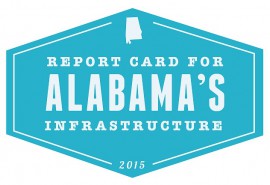 The inaugural Report Card for Alabama’s Infrastructure, released today, reveals that Alabama’s aging infrastructure needs attention, especially its dams. As the only state without a dam safety program, Alabama does not have a complete inventory of all the dams in the state. Without this, Alabama is unaware of its dam safety risk. At the last survey in the 1980s, 147 high hazard dams were found and do not have Emergency Action Plans. Because of the unknowns surrounding Alabama’s dams, the Report Card graded it an “Incomplete,” signified by a question mark to demonstrate the uncertainty caused by of a lack of inventory and dam safety program.
With a cumulative grade point average of “C-,”Alabama’s infrastructure is only as strong as its weakest link. All of the highest grades are linked to the lowest grades in the report, as infrastructure works as a system. Plans and funding to address the state’s aging infrastructure assets fall significantly short of needs. Of note:
The inaugural Report Card for Alabama’s Infrastructure, released today, reveals that Alabama’s aging infrastructure needs attention, especially its dams. As the only state without a dam safety program, Alabama does not have a complete inventory of all the dams in the state. Without this, Alabama is unaware of its dam safety risk. At the last survey in the 1980s, 147 high hazard dams were found and do not have Emergency Action Plans. Because of the unknowns surrounding Alabama’s dams, the Report Card graded it an “Incomplete,” signified by a question mark to demonstrate the uncertainty caused by of a lack of inventory and dam safety program.
With a cumulative grade point average of “C-,”Alabama’s infrastructure is only as strong as its weakest link. All of the highest grades are linked to the lowest grades in the report, as infrastructure works as a system. Plans and funding to address the state’s aging infrastructure assets fall significantly short of needs. Of note:
- Only an estimated 2% of all known dams in Alabama are being inspected for safety, maintained, and have emergency action plans in place for use in the case of an incident or failure. Without a dam safety program, communities that live under dams may not be aware of their risk, and emergency action plans for high hazard dams may not be in place to mitigate property damage and save lives in the case of a breach or failure.
- The majority of the state’s drinking water infrastructure was installed from the 1960s to the 1980s and operating beyond their useful design life.
- 1 in 3 wastewater utility providers statewide report having inadequate rate structures to cover normal operating expenses.
- Septic systems are commonly used in more rural parts of Alabama; 25% of the estimated 850,000 on-site septic systems are in failing or failed condition and could be polluting the community’s groundwater.
- Alabama has 1,388 structurally deficient bridges, ranking 15th most in the country, with many of these being bridges funded and maintained locally.
- Nearly 50% of interstate and state highways are in fair, poor, or very poor condition. Driving on rough and congested roads costs the average Alabama driver at least $300 a year in extra vehicle repairs.
- Much of the inland waterway lock and dam infrastructure within the state is breaking down and has passed the 50 year design service life or is approaching it. As an example, Coffeeville Lock and Dam has a throughput of 10 million tons in spite of vessel delay rates and durations in excess of 90% and 150 hours.
- Finish the dams inventory and pass legislation to create a dam safety program, establish emergency action plans, and use periodic safety inspections to keep communities safe.
- Prioritize routine maintenance to save money and prevent emergency repairs across all infrastructure types.
- Increase replacement of structurally deficient bridges, which are mostly owned and operated locally.
- Create state funding strategies that recognize the importance of functional drinking water, stormwater, and sewer infrastructure to support the economic development of Alabama.
Army Corps of Engineers Are Stewards of Infrastructure
November 11th, 2015 | By: Becky Moylan
As stewards of our nation’s infrastructure, civil engineers work to design, build, and maintain our roads, bridges, water pipes, dams, and levees through many different private companies and public agencies, including the U.S. Army Corps of Engineers (USACE). In honor of the veterans who have served in this way, here are some of the many ways that the USACE serve their fellow Americans by delivering engineering services. Inland waterways were the first way that goods were moved across the country. The Corps was tasked with transforming our waterways into navigable paths for cargo ships, and today still maintains the inland waterway system. The system carries the equivalent to 51 million truck trips each year—making it the hidden backbone of our freight network and our economy. To help improve the condition of the infrastructure, USACE recently launched a pilot program for public-private partnerships to move projects forward more quickly. USACE also has an Ecosystem Restoration Program, which works to restore degraded ecosystems such as Louisiana Coastal Area and Chesapeake Bay to more natural conditions. Reducing risk from disaster is one of the pillars of the Corps’ mission. USACE’s emergency operations include responding to drought, floods, and hurricanes along with proactive mitigation of risk. Its Disaster Impact Model predicts the scale and scope of a disaster before it occurs to aid emergency managers’ preparations. The U.S. Army Corps of Engineers is led by Major General Donald E. Jackson, who assumed the position earlier this year. Thanks to the Corps vision of “engineering solutions for our nation’s toughest challenges,” the USACE delivers on its mission to strengthen our nation’s security, energize our economy, and reduce risks from disasters. Thank you to the U.S. Army Corps of Engineers and all are veterans for their service to our country.Join in the National Imagine a Day Without Water
October 6th, 2015 | By: Becky Moylan
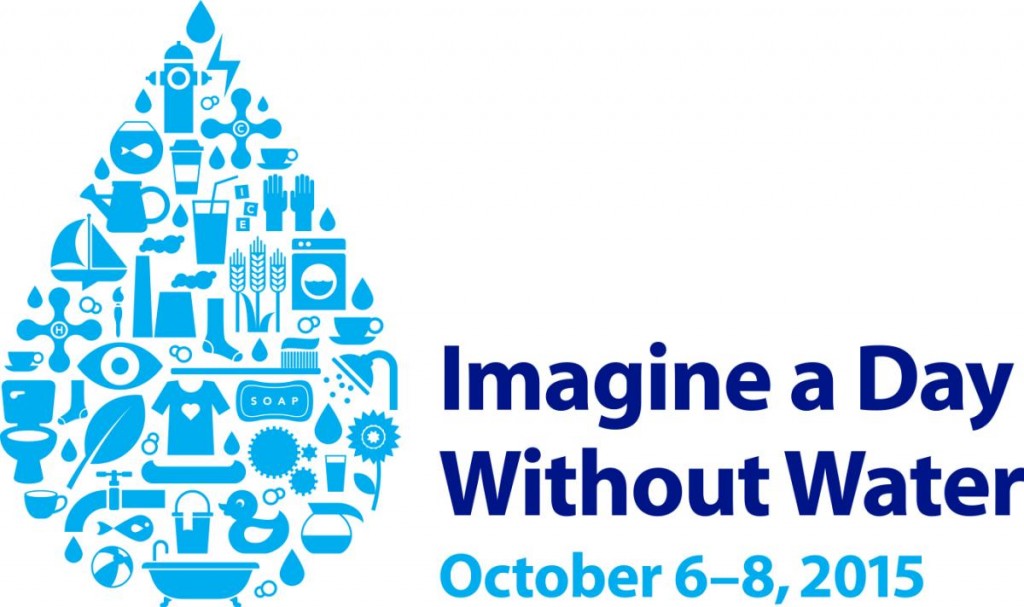 There is a water main break every two minutes in the U.S. For such a valuable resource, we are not prioritizing it in the way we should. As cliché as it may sound, water makes everything possible. Morning coffee, fighting fires, manufacturing blue jeans, growing apples, and visiting a water park all require water.
Across the country, the pipe systems that deliver and treat our water are aging and beginning to deteriorate, evident in the “D” grade in the 2013 Report Card for America’s Infrastructure. Many water pipes are at the end of their useful life, with some even dating back to the Civil War era. Each time a water main breaks, our communities suffer as roads are shut down for repairs, and water to nearby homes and businesses is shut off. With these systems buried underground, our water becomes an “out of sight, out of mind” problem until disaster strikes.
This goes beyond inconvenience, as this aging infrastructure is a drag on the economy. ASCE’s Failure to Act economic study assessed that if we fail to increase investment into our water and wastewater infrastructure by 2020, then family budgets will be squeezed by $900 as water rates rise and personal income falls. Furthermore, there will be an increased cost to businesses of $147 billion because of inadequate infrastructure.
Investing in our nation’s water infrastructure would have the reverse effect, as investment by 2020 would strengthen our economy by protecting almost 700,000 jobs, $416 billion in GDP, and $6 billion in U.S. exports. Coupled with the benefit of protecting the precious resource of water, improving our water infrastructure comes with a huge return on investment.
This week, you have the opportunity to stand up for our most essential resource during the Value of Water Coalition’s “Imagine A Day Without Water.” Join in by connecting your Twitter, Facebook or Tumblr to the Thunderclap that will amplify the message to #ValueWater through social media, check out the events happening around the country, or consider participating other ways.
We can modernize our nation’s water infrastructure, but it will take investment and leadership from all levels of government. The average U.S. family spends twice as much on their cable bill than on their water bill each year. These current rates do not reflect the true cost of supplying clean, reliable drinking water; to replace our nation’s antiquated pipes it will take significant local investment. By prioritizing water infrastructure today, we can ensure clean, safe water so that communities can thrive in the future.
There is a water main break every two minutes in the U.S. For such a valuable resource, we are not prioritizing it in the way we should. As cliché as it may sound, water makes everything possible. Morning coffee, fighting fires, manufacturing blue jeans, growing apples, and visiting a water park all require water.
Across the country, the pipe systems that deliver and treat our water are aging and beginning to deteriorate, evident in the “D” grade in the 2013 Report Card for America’s Infrastructure. Many water pipes are at the end of their useful life, with some even dating back to the Civil War era. Each time a water main breaks, our communities suffer as roads are shut down for repairs, and water to nearby homes and businesses is shut off. With these systems buried underground, our water becomes an “out of sight, out of mind” problem until disaster strikes.
This goes beyond inconvenience, as this aging infrastructure is a drag on the economy. ASCE’s Failure to Act economic study assessed that if we fail to increase investment into our water and wastewater infrastructure by 2020, then family budgets will be squeezed by $900 as water rates rise and personal income falls. Furthermore, there will be an increased cost to businesses of $147 billion because of inadequate infrastructure.
Investing in our nation’s water infrastructure would have the reverse effect, as investment by 2020 would strengthen our economy by protecting almost 700,000 jobs, $416 billion in GDP, and $6 billion in U.S. exports. Coupled with the benefit of protecting the precious resource of water, improving our water infrastructure comes with a huge return on investment.
This week, you have the opportunity to stand up for our most essential resource during the Value of Water Coalition’s “Imagine A Day Without Water.” Join in by connecting your Twitter, Facebook or Tumblr to the Thunderclap that will amplify the message to #ValueWater through social media, check out the events happening around the country, or consider participating other ways.
We can modernize our nation’s water infrastructure, but it will take investment and leadership from all levels of government. The average U.S. family spends twice as much on their cable bill than on their water bill each year. These current rates do not reflect the true cost of supplying clean, reliable drinking water; to replace our nation’s antiquated pipes it will take significant local investment. By prioritizing water infrastructure today, we can ensure clean, safe water so that communities can thrive in the future.
New Game Changers Report Identifies Top Trends Shaping Infrastructure
July 23rd, 2015 | By: Becky Moylan
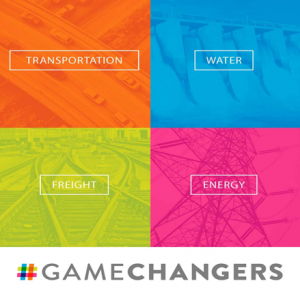 The challenges our infrastructure faces are chronicled frequently on this blog and in the media. The Highway Trust Fund heading toward insolvency (again). Water main breaks occurring every two minutes. Congested roadways causing us each to lose time and waste gas.
But that’s only half the story. Today, we released our new Infrastructure #GameChangers report, which identifies the top trends in energy, freight, transportation and water that are transforming the way infrastructure is designed, planned, and built.
The communities that chose to make the investment across the country are reaping the benefits, by preparing for tomorrow’s challenges and positioning themselves for economic growth.
Here are some of the trends explored in the report:
Transportation
The challenges our infrastructure faces are chronicled frequently on this blog and in the media. The Highway Trust Fund heading toward insolvency (again). Water main breaks occurring every two minutes. Congested roadways causing us each to lose time and waste gas.
But that’s only half the story. Today, we released our new Infrastructure #GameChangers report, which identifies the top trends in energy, freight, transportation and water that are transforming the way infrastructure is designed, planned, and built.
The communities that chose to make the investment across the country are reaping the benefits, by preparing for tomorrow’s challenges and positioning themselves for economic growth.
Here are some of the trends explored in the report:
Transportation
- Ridesharing and transit apps
- Robotic inspections
- Bus rapid transit
- Smart parking systems
- Accelerated bridge construction
- LiDAR and drone technology
- Integrating renewables
- Preparing for blackouts with resilience
- Extracting energy from waste
- Recycled and reclaimed water
- Desalinated water
- Public-private partnerships for inland waterways
- Preparing for the Panama Canal expansion
Five (More) Myths About the Highway Trust Fund
July 15th, 2015 | By: Becky Moylan
1. Devolving the federal program to the states is a viable option Devolution is the idea of eliminating the federal government’s ability to collect the current 18.4 cents per gallon in federal gasoline taxes (absent a few cents to remain dedicated toward maintaining the Interstate Highway System) and transferring all authority over these programs to the state. This act would represent one of the single greatest unfunded mandates at nearly $50 billion—a violation of the Unfunded Mandates Reform Act of 1995. The current system empowers states by making the federal role a reimbursement process, allowing states to make their own planning and building decisions while also having some overall coordination and safety standards among states. Many states have raised their own gas taxes recently, essentially catching up the purchasing power of their current gas tax rates with inflation since they were last adjusted. For example, Iowa had not raised its gas tax since 1989 and its 10-cent increase was a hard fought battle. To ask states to pick up the tab for the federal role—which on average is 52% of the state’s capital budget each year—would be a huge burden to states’ budgets. On average, states would need to raise their gas tax by 23 cents or significantly cut their transportation program. It would not be the easy task that the proponents of devolution make it out to be. Instead, our roads, bridges and transit would continue to deteriorate and the backlog of projects would grow longer and the system will become patchwork if some states fail to make investments. 2. Transportation has become a partisan issue Transportation has historically been a bipartisan issue, and passing a multi-year, properly funded transportation bill will only be accomplished through bipartisan cooperation. In the past year, there have been several bipartisan proposals to help address the Highway Trust Fund crisis. Senators Bob Corker (R-TN) and Tom Carper (D-DE) have proposed a plan. In the House, Reps. Renacci (R-OH), Pascrell (D-NJ), Ribble (R-WI), and Lipinski (D-IL) have introduced the Bridge to Sustainable Infrastructure Act. Before the Independence Day Recess, the Senate Committee on Environment & Public Works unanimously passed the DRIVE Act out of committee. Both sides of the aisle acknowledge that our transportation system is ailing and that something must be done. Fixing the Highway Trust Fund is, at its heart, a bipartisan endeavor. 3. Flat funding is fine If Congress does not grow the program and increase federal funding levels in the next multiyear transportation bill, then our economy will continue to suffer. In 2011, ASCE released an economic study on transportation titled Failure to Act, which details how underinvesting in transportation is a drag on our economy. The study outlined what the economic ramifications will be by 2020 if status quo funding levels continue. Among them, we revealed that America’s GDP will underperform by $897 billion in total by 2020 and each family’s budget loses $1,060 each year in disposable income—money every American household has already lost and will continue to lose if we don’t improve our transportation network. Underinvestment in transportation will cost our economy 877,000 jobs in the year 2020. Continuing to fund at current levels for the next several years will neither improve our aging transportation network, nor grow the economy 4. A gas tax is not politically possible Several states have recently acted in bipartisan fashion to pass gas tax increases. In those states, 90% of those who voted in favor the gas tax increase got reelected in the following election. And many were conservative states, like Arkansas, which needed to see a high return on investment. A poll by the Mineta Transportation Institute demonstrated that people are willing to pay more in gas taxes if it goes to improving transportation. This study shows that voters recognize the connection between potholed roads and aging bridges and underinvestment. In addition, the impact of a gas tax on gas prices is not as direct as sometimes thought. A recent study by ARTBA finds that gas tax increases have very little impact on the overall price of a gallon of gas. CBO projects that the Highway Trust fund’ revenue shortfall will be $8 billion at the end of this year and be between $85 billion and $90 billion by May 31, 2021. There is no reason to add to the national debt and our burden on future generations when raising the gas tax is a deficit-neutral options. 5. We can kick the can again Two-month stopgaps hurt the economy and American business. For two consecutive years, the summer highway and transit construction season has taken a hit because of the uncertainty surrounding the federal program. For example, just in the last few weeks and months, several states have announced they are canceling or delaying projects until Congress passes a multi-year bill. These short-term extensions not only delay existing projects in the pipeline but prevent major projects from being considered in light of the lack of a clear federal funding commitment. Ultimately the lack of certainty hinders our nation’s ability to dream big on ways to modernize our infrastructure and create the foundation for the 21st century economy. See the original posts 10 Myths About the Highway Trust Fund.Infrastructure That’s Changing the Game
July 14th, 2015 | By: Becky Moylan
 Our nation’s aging infrastructure is facing big challenges. But congested roadways and overflowing sewers are only half the story.
That’s why the American Society of Civil Engineers is releasing a new report about the innovative ways communities across the country are modernizing infrastructure. Infrastructure Game Changers highlights trends in energy, freight, transportation and water infrastructure that are changing the way we design, plan, and build projects.
The web-based report will be released on Thursday, July 23rd. Stay tuned so that you can be among the first to check it out, share it on social media using #GameChangers, and even submit your own game changing infrastructure trend.
Our nation’s aging infrastructure is facing big challenges. But congested roadways and overflowing sewers are only half the story.
That’s why the American Society of Civil Engineers is releasing a new report about the innovative ways communities across the country are modernizing infrastructure. Infrastructure Game Changers highlights trends in energy, freight, transportation and water infrastructure that are changing the way we design, plan, and build projects.
The web-based report will be released on Thursday, July 23rd. Stay tuned so that you can be among the first to check it out, share it on social media using #GameChangers, and even submit your own game changing infrastructure trend.
#FIXTHETRUSTFUND This Week: Time for Congress’ Next Move
July 6th, 2015 | By: Becky Moylan
 Congress returns to D.C. this week, and we’re watching the Senate (where the most promising legislation was recently passed through the EPW Committee) to see if the Senate Commerce Committee or the Senate Banking Committee will start to mark-up their portions of the highway and transit bill. However to truly move forward, Senate leadership and the Senate Finance Committee need to find the revenue to move the DRIVE Act forward.
With just 16 working days with both chambers in session before the July 31 deadline, it’s important that Congress hear from you. Drive Congress to #FixTheTrustFund in the following ways:
Congress returns to D.C. this week, and we’re watching the Senate (where the most promising legislation was recently passed through the EPW Committee) to see if the Senate Commerce Committee or the Senate Banking Committee will start to mark-up their portions of the highway and transit bill. However to truly move forward, Senate leadership and the Senate Finance Committee need to find the revenue to move the DRIVE Act forward.
With just 16 working days with both chambers in session before the July 31 deadline, it’s important that Congress hear from you. Drive Congress to #FixTheTrustFund in the following ways:

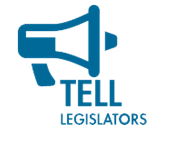




 */ ?>
*/ ?>













